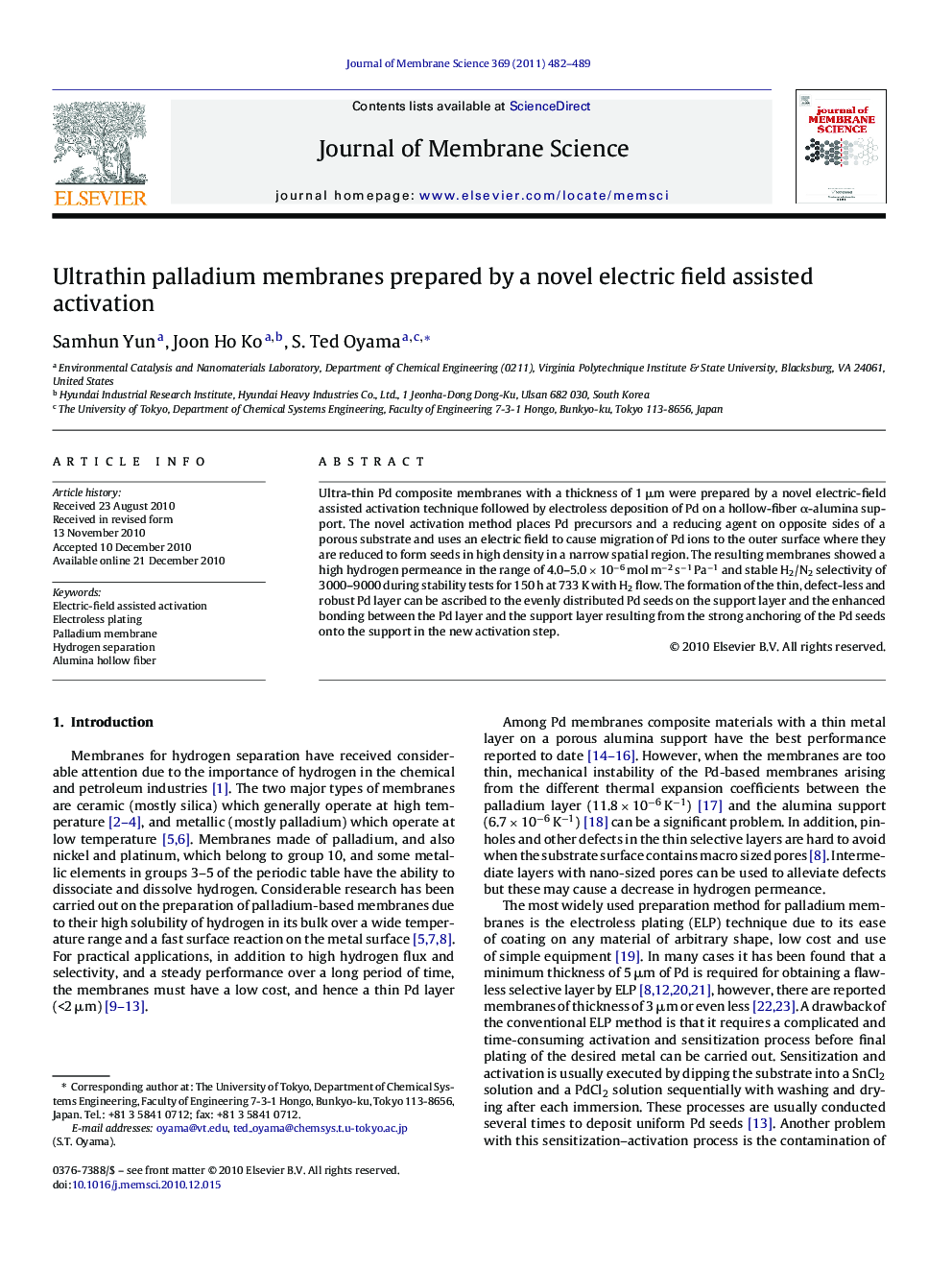| Article ID | Journal | Published Year | Pages | File Type |
|---|---|---|---|---|
| 635993 | Journal of Membrane Science | 2011 | 8 Pages |
Ultra-thin Pd composite membranes with a thickness of 1 μm were prepared by a novel electric-field assisted activation technique followed by electroless deposition of Pd on a hollow-fiber α-alumina support. The novel activation method places Pd precursors and a reducing agent on opposite sides of a porous substrate and uses an electric field to cause migration of Pd ions to the outer surface where they are reduced to form seeds in high density in a narrow spatial region. The resulting membranes showed a high hydrogen permeance in the range of 4.0–5.0 × 10−6 mol m−2 s−1 Pa−1 and stable H2/N2 selectivity of 3000–9000 during stability tests for 150 h at 733 K with H2 flow. The formation of the thin, defect-less and robust Pd layer can be ascribed to the evenly distributed Pd seeds on the support layer and the enhanced bonding between the Pd layer and the support layer resulting from the strong anchoring of the Pd seeds onto the support in the new activation step.
Graphical abstractA novel electric-field assisted activation technique allows the formation of ultra-thin Pd composite membranes by electroless plating with a thickness of 1 μm on a hollow-fiber α-alumina support. The material ranks with the best membranes in permeance, selectivity, and stability.Figure optionsDownload full-size imageDownload high-quality image (186 K)Download as PowerPoint slideResearch highlights▶ A novel electric-field assisted activation technique produces thin Pd composite membranes with a thickness of 1 μm on a hollow-fiber α-alumina support. ▶ The novel activation method forms seeds in high density in a narrow spatial region. ▶ The resulting membranes show high hydrogen permeance in the range of 4.0–5.0 × 10−6 mol m−2 s−1 Pa−1 and stable H2/N2 selectivity of 3000–9000 during stability tests for 150 h at 733 K with H2 flow.
